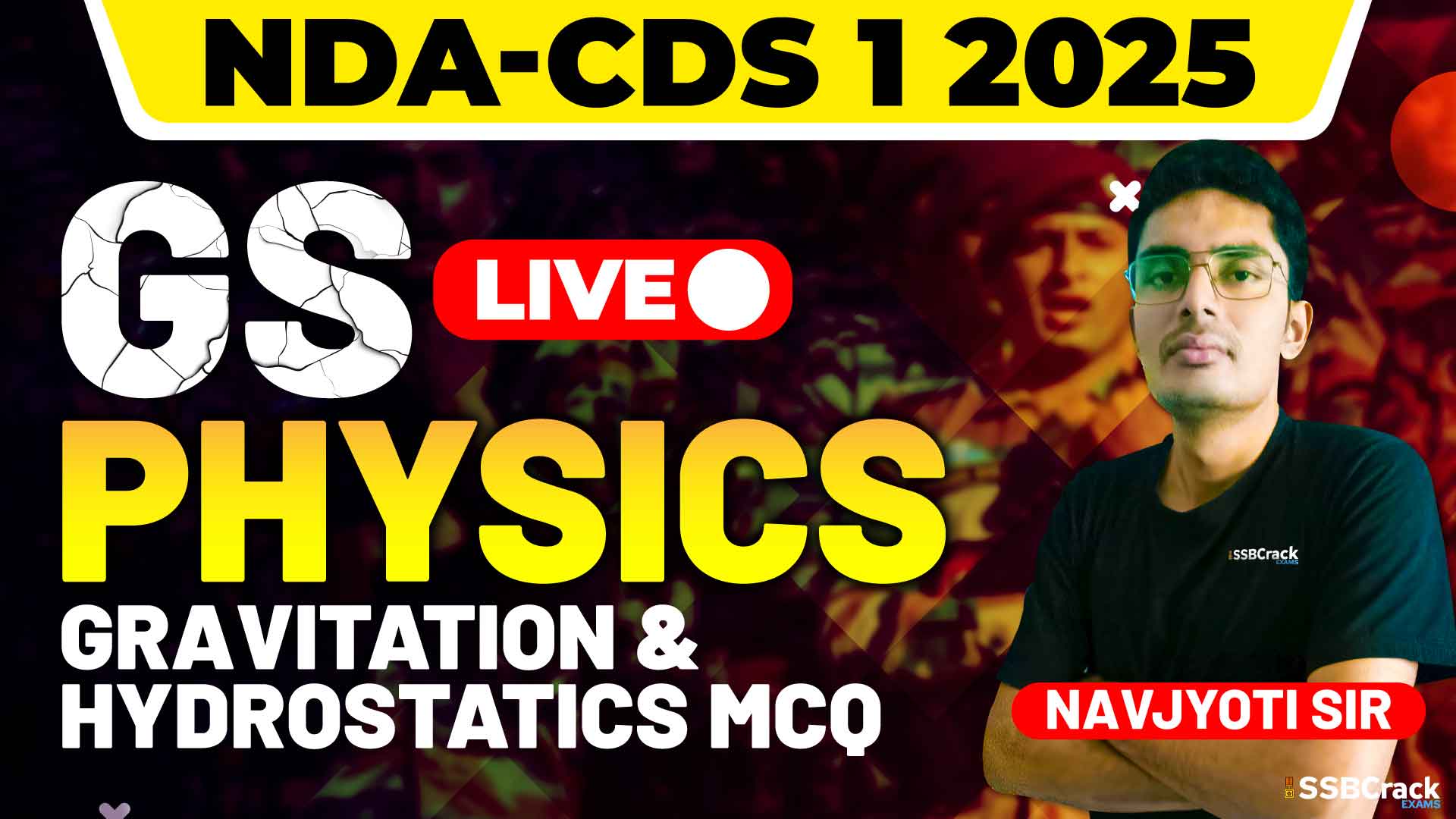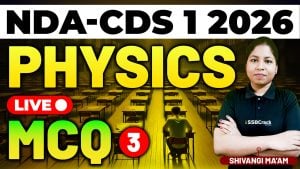Physics is an essential component of competitive exams like the National Defence Academy and Naval Academy (NDA-NA) Exam and the Combined Defence Services (CDS) Exam. Among the crucial topics, Gravitation and Hydrostatics stand out for their frequent inclusion in the Physics section. A recent class on these topics aimed to reinforce conceptual understanding and problem-solving skills through intensive MCQ practice, focusing on both previous years’ questions and expected questions.
Here’s a detailed overview of the class and strategies to excel in these topics for the NDA-NA and CDS exams.
Overview of the Class
Gravitation
The gravitation portion of the class revisited the fundamental concepts and their applications. Key areas of focus included:
- Newton’s Law of Gravitation: Understanding the universal nature of gravitational force and its implications in celestial motion and everyday life.
- Acceleration due to Gravity (g): Discussions included its variations due to altitude, depth, and latitude, helping students visualize real-world applications.
- Kepler’s Laws of Planetary Motion: Students explored the laws governing celestial orbits and their significance in understanding planetary dynamics.
- Satellites: Topics like geostationary and polar satellites, along with their applications in communication and defense, were emphasized.
- Escape Speed: Practical insights into the energy required for an object to overcome Earth’s gravitational pull added depth to the discussion.
Hydrostatics
The hydrostatics segment of the class focused on key concepts essential for understanding the behavior of fluids. Topics covered included:
- Thrust and Pressure: Students explored real-life examples, such as the design of hydraulic systems and dam structures.
- Pascal’s Law: Its practical applications, including hydraulic lifts and brakes, were discussed in detail.
- Buoyancy and Archimedes’ Principle: Real-world scenarios like floating ships and submerged objects were analyzed to illustrate these principles.
- Law of Floatation: Examples such as iceberg buoyancy and ship stability were used to explain this critical concept.
- Density and Specific Gravity: Practical examples highlighted the role of density in determining the behavior of objects in fluids.
MCQ Practice
The class placed strong emphasis on problem-solving skills by incorporating:
- Previous Years’ Questions: These provided insights into frequently tested areas and exam patterns.
- Expected Questions: Students practiced likely questions designed to challenge their understanding and application of concepts.
- Application-Based Scenarios: Questions required students to apply theoretical knowledge to practical situations, enhancing their problem-solving ability.
Strategies to Master Gravitation and Hydrostatics
To prepare effectively for these topics, students should adopt the following strategies:
1. Develop Conceptual Clarity
Understanding the basic principles of Gravitation and Hydrostatics is essential. Focus on:
- Newton’s Law of Gravitation and its implications for planetary motion and celestial phenomena.
- Archimedes’ Principle, Pascal’s Law, and the relationship between pressure and depth in fluids.
2. Visualize Real-Life Applications
Connecting theoretical knowledge to real-world scenarios makes learning more engaging and memorable. Examples include:
- The design of hydraulic lifts and braking systems.
- Satellite motion and communication systems.
- The buoyancy of ships and submarines.
3. Practice Problem-Solving
Solve a variety of questions to build confidence:
- Start with basic conceptual problems and gradually progress to application-based questions.
- Pay special attention to areas like pressure variations, buoyant forces, and gravitational acceleration.
4. Utilize Diagrams and Visual Tools
Diagrams can simplify complex topics:
- Use free-body diagrams to analyze forces in Hydrostatics.
- Draw orbital paths to understand Kepler’s Laws and satellite motion.
5. Focus on High-Weightage Areas
Prioritize topics that frequently appear in exams:
- For Gravitation: Kepler’s Laws, satellite motion, and escape velocity.
- For Hydrostatics: Pascal’s Law, buoyancy, and the Law of Floatation.
6. Solve Previous Years’ Papers
Analyzing past question papers helps identify trends and frequently asked questions. Regular practice ensures familiarity with the exam pattern and improves time management.
7. Take Mock Tests
Mock tests simulate the exam environment, providing an opportunity to assess strengths and weaknesses. Review your performance and focus on improving weak areas.
8. Create Summary Notes
Prepare concise notes with key points and concepts. Use these for quick revision, especially as the exam approaches.
9. Time Management
While solving questions, allocate time wisely:
- Spend less time on straightforward problems to focus more on challenging ones.
- Practice under timed conditions to build speed and accuracy.
10. Revise Regularly
Regular revision is key to retaining information. Schedule periodic reviews of critical topics like buoyancy, gravitational force, and satellite motion.
Conclusion
The recent class on Gravitation and Hydrostatics provided students with a comprehensive understanding of these important topics. Through rigorous practice of MCQs from previous years and expected questions, students were able to strengthen their grasp of key concepts and enhance their problem-solving abilities.
To excel in these topics, aspirants should focus on conceptual clarity, practice diligently, and relate theoretical knowledge to real-life applications. By adopting a strategic approach, students can confidently approach Gravitation and Hydrostatics questions in the NDA-NA and CDS exams.
Stay consistent in your preparation, revise regularly, and approach the exams with confidence. Success in these competitive exams is within your reach with the right mindset and effort. Best of luck!

















